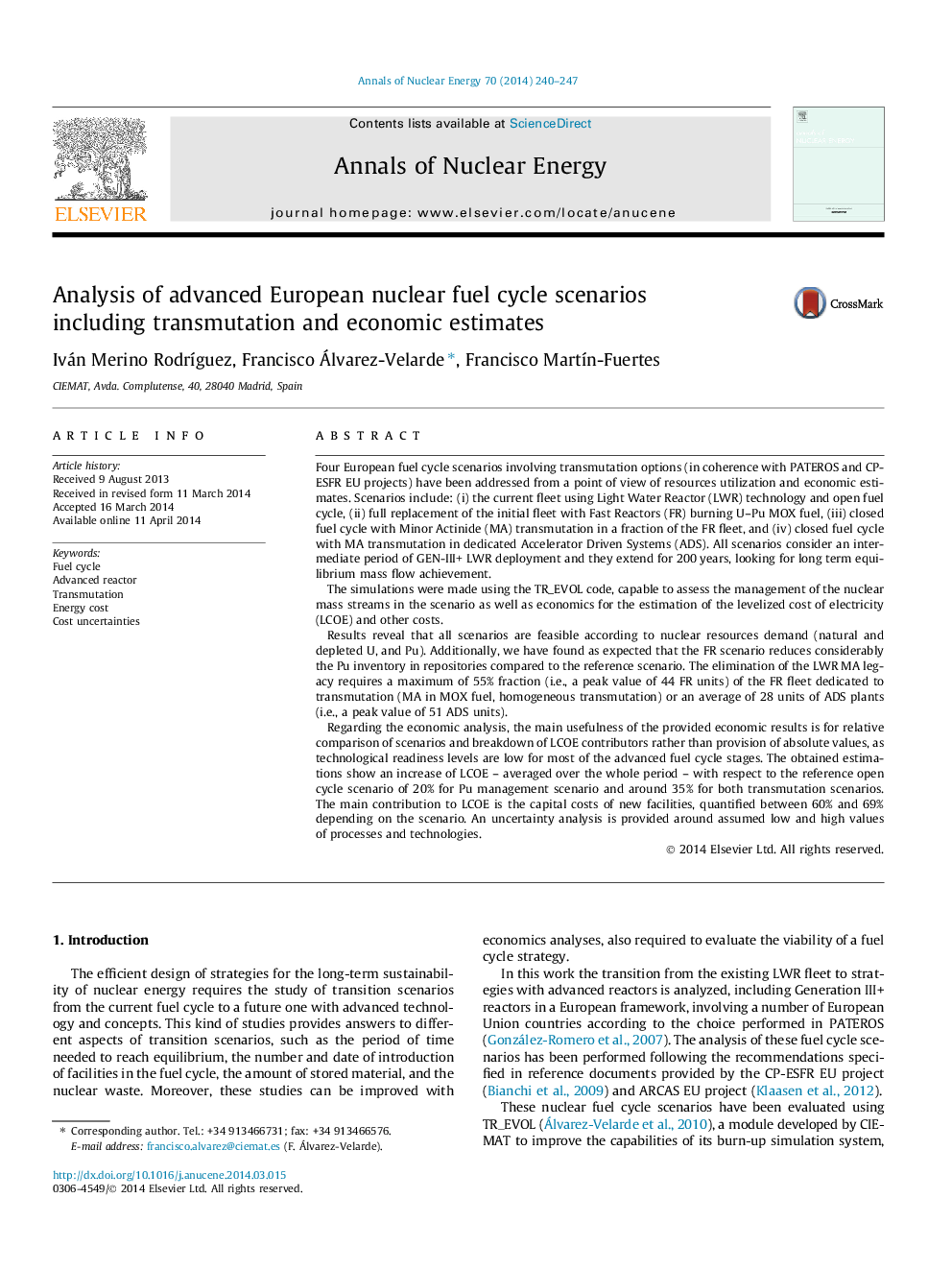| کد مقاله | کد نشریه | سال انتشار | مقاله انگلیسی | نسخه تمام متن |
|---|---|---|---|---|
| 1728331 | 1521128 | 2014 | 8 صفحه PDF | دانلود رایگان |
• Four fuel cycle scenarios have been analyzed in resources and economic terms.
• Scenarios involve Once-Through, Pu burning, and MA transmutation strategies.
• No restrictions were found in terms of uranium and plutonium availability.
• The best case cost and the impact of their uncertainties to the LCOE were analyzed.
Four European fuel cycle scenarios involving transmutation options (in coherence with PATEROS and CP-ESFR EU projects) have been addressed from a point of view of resources utilization and economic estimates. Scenarios include: (i) the current fleet using Light Water Reactor (LWR) technology and open fuel cycle, (ii) full replacement of the initial fleet with Fast Reactors (FR) burning U–Pu MOX fuel, (iii) closed fuel cycle with Minor Actinide (MA) transmutation in a fraction of the FR fleet, and (iv) closed fuel cycle with MA transmutation in dedicated Accelerator Driven Systems (ADS). All scenarios consider an intermediate period of GEN-III+ LWR deployment and they extend for 200 years, looking for long term equilibrium mass flow achievement.The simulations were made using the TR_EVOL code, capable to assess the management of the nuclear mass streams in the scenario as well as economics for the estimation of the levelized cost of electricity (LCOE) and other costs.Results reveal that all scenarios are feasible according to nuclear resources demand (natural and depleted U, and Pu). Additionally, we have found as expected that the FR scenario reduces considerably the Pu inventory in repositories compared to the reference scenario. The elimination of the LWR MA legacy requires a maximum of 55% fraction (i.e., a peak value of 44 FR units) of the FR fleet dedicated to transmutation (MA in MOX fuel, homogeneous transmutation) or an average of 28 units of ADS plants (i.e., a peak value of 51 ADS units).Regarding the economic analysis, the main usefulness of the provided economic results is for relative comparison of scenarios and breakdown of LCOE contributors rather than provision of absolute values, as technological readiness levels are low for most of the advanced fuel cycle stages. The obtained estimations show an increase of LCOE – averaged over the whole period – with respect to the reference open cycle scenario of 20% for Pu management scenario and around 35% for both transmutation scenarios. The main contribution to LCOE is the capital costs of new facilities, quantified between 60% and 69% depending on the scenario. An uncertainty analysis is provided around assumed low and high values of processes and technologies.
Journal: Annals of Nuclear Energy - Volume 70, August 2014, Pages 240–247
